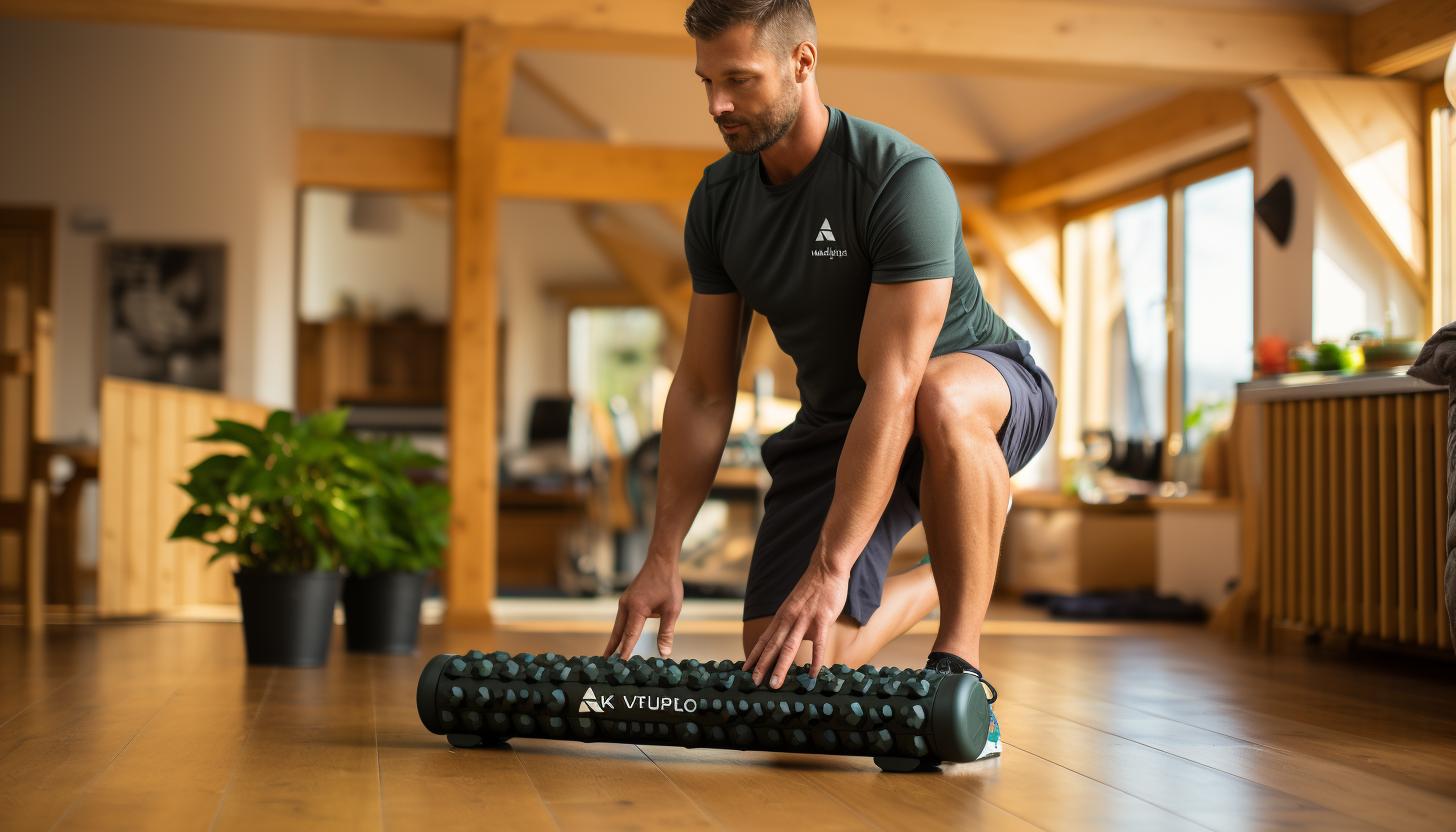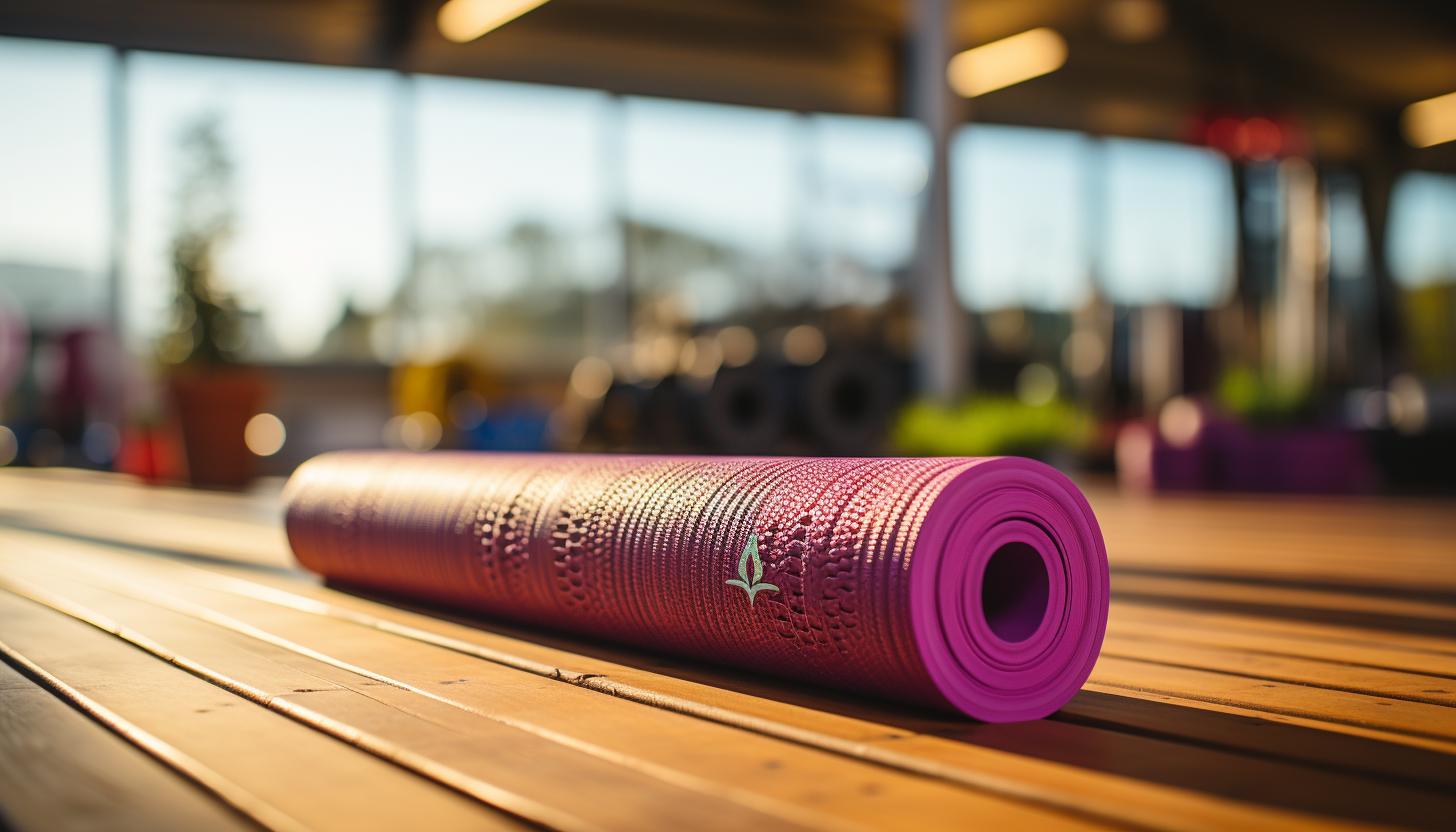The Importance of Foam Rolling and Stretching for Injury Prevention

Are you tired of dealing with nagging injuries that hinder your fitness progress? Discover the power of foam rolling and stretching for injury prevention.
This dynamic duo can help you achieve peak performance by increasing flexibility, improving circulation, and reducing muscle soreness. Incorporating these practices into your routine is a game-changer.
Say goodbye to common injuries like strains and sprains as you learn proper techniques and create a personalized foam rolling and stretching regimen.
It’s time to take control of your fitness journey and prioritize injury prevention.
The Science Behind Foam Rolling and Stretching

The science behind foam rolling and stretching is still being studied, but it shows promising results for injury prevention. Understanding the biomechanics of foam rolling and stretching can provide insight into how these practices contribute to flexibility and ultimately help prevent injuries.
Foam rolling involves using a cylindrical foam roller to apply pressure on specific muscle groups. This self-myofascial release technique works by breaking up adhesions and knots in the muscles, improving blood flow, and increasing joint range of motion. By targeting tight areas in the muscles, foam rolling helps improve flexibility, which plays a crucial role in injury prevention.
Flexibility is essential because it allows joints to move through their full range of motion without undue stress or strain. When muscles are tight or imbalanced, they can pull on joints incorrectly, leading to increased risk of injury during physical activity. Regular foam rolling and stretching routines can help address these issues by promoting muscle lengthening and relaxation.
Research has shown that incorporating foam rolling and stretching exercises into your routine can enhance overall athletic performance while reducing the risk of injuries such as strains, sprains, and muscle tears. However, it’s important to note that individual differences may exist when it comes to optimal timing and duration for foam rolling sessions.
Benefits of Incorporating Foam Rolling and Stretching Into Your Routine

Incorporating foam rolling and stretching into your routine can offer numerous benefits. Not only do these practices enhance flexibility, but they also play a crucial role in injury prevention. When it comes to preventing injuries, nutrition is often overlooked. However, maintaining a well-balanced diet that includes essential nutrients like calcium, vitamin D, and antioxidants can promote tissue repair and reduce the risk of injuries.
Flexibility is closely linked to injury risk. Limited range of motion can lead to muscle imbalances and compensations, increasing the likelihood of strains or sprains during physical activity. By regularly foam rolling and stretching, you can improve your flexibility and joint mobility, reducing the chances of sustaining an injury.
Foam rolling has been shown to increase blood flow to muscles, release tension in connective tissues, and alleviate muscle soreness after exercise. Stretching helps lengthen muscles and improve their elasticity, making them less prone to tears or strains.
Common Injuries Prevented by Foam Rolling and Stretching

Regularly incorporating foam rolling and stretching into your routine can help prevent common injuries such as hamstring strains and ankle sprains. By engaging in these practices, you can improve your flexibility, reduce muscle tension, and enhance the overall health of your muscles and joints.
Foam rolling is a self-myofascial release technique that uses a foam roller to apply pressure to specific areas of your body. This helps to break up adhesions or knots in the muscles, improving blood flow and promoting better mobility. Stretching, on the other hand, lengthens the muscles and tendons, increasing their elasticity and reducing the risk of injury.
To give you a clearer understanding of how foam rolling and stretching can prevent common injuries, consider the following table:
| Common Injury | Foam Rolling Benefits | Stretching Benefits |
|---|---|---|
| Hamstring Strains | Loosens tight hamstrings | Increases flexibility in hamstrings |
| Ankle Sprains | Relieves calf muscle tension | Improves ankle mobility |
Incorporating foam rolling exercises that target the hamstrings can alleviate tightness in this area. Similarly, performing stretches for both the hamstrings and ankles will increase their flexibility and range of motion, reducing the likelihood of strains or sprains.
Proper Techniques for Effective Foam Rolling and Stretching

To effectively foam roll and stretch, it’s crucial to use proper techniques that target specific muscle groups. Foam rolling is a self-myofascial release technique that helps to alleviate muscle tightness and improve flexibility.
When using a foam roller, start by placing it on the targeted muscle group and apply gentle pressure as you roll back and forth along the length of the muscle. Focus on any areas of tension or discomfort, spending about 30 seconds on each spot.
Stretching exercises are also important for injury prevention as they help to improve range of motion and promote muscular balance. When stretching, make sure to warm up your muscles first with some light cardio activity such as jogging or jumping jacks. Then, hold each stretch for about 30 seconds without bouncing or jerking movements.
It’s important to breathe deeply throughout the stretches and avoid any pain or discomfort. Incorporating both foam rolling techniques and stretching exercises into your routine can greatly reduce the risk of injuries during physical activity.
How to Create a Foam Rolling and Stretching Routine for Injury Prevention

When creating a foam rolling and stretching routine for injury prevention, it’s helpful to start with a warm-up activity like light cardio. This gets your blood flowing and prepares your muscles for the upcoming workout. After your warm-up, you can move on to foam rolling techniques. Foam rolling is a self-myofascial release technique that helps loosen tight muscles and improve flexibility. It involves using a foam roller to apply pressure to specific areas of your body.
In addition to foam rolling, incorporating dynamic stretching into your routine is crucial for injury prevention. Dynamic stretching involves moving through a range of motion while actively stretching the muscles. This type of stretching not only improves flexibility but also enhances muscle coordination and reduces the risk of muscle strains or tears.
To help you understand how to create an effective foam rolling and stretching routine, here is a table outlining some sample exercises:
| Foam Rolling | Dynamic Stretching |
| Quadriceps | Leg swings |
| Hamstrings | Walking lunges |
| Calves | High knees |
| IT band | Butt kicks |
| Upper back | Arm circles |
Conclusion
In conclusion, incorporating foam rolling and stretching into your routine is essential for injury prevention. The science behind these practices proves their effectiveness in promoting flexibility, reducing muscle tension, and improving range of motion.
By regularly engaging in proper techniques like utilizing a foam roller and performing dynamic stretches, you can prevent common injuries such as strains and sprains.
So, don’t delay! Develop a dedicated foam rolling and stretching routine to keep your body limber, loose, and less likely to suffer from setbacks.
Remember, repetition yields remarkable results!






